Through the looking glass of Miami’s Millionaire Row stood an array of mansions occupied by the wealthy families that once called Brickell Avenue home. Some of them created their wealth in the growing City of Miami after incorporation, and others were the industrial leaders of the Gilded Age who built their fortunes in other parts of the country. All of them enjoyed the tranquility and privacy that Brickell Avenue offered.
The residents of Millionaire Row during this era were well-known American success stories. Some arrived by private train cars and most threw lavish parties to showcase and celebrate their wealth. Perhaps the most recognizable resident of millionaire row during this time was an internationally known artist from New York.
Louis Comfort Tiffany
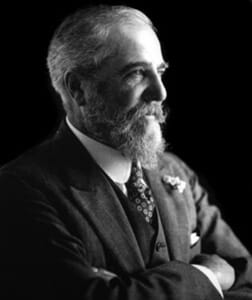
Figure 1: Portrait of Louis Comfort Tiffany.
Born on February 18, 1848, Louis was the oldest son of Charles and Harriet Tiffany. Charles was the famed jeweler and founder of Tiffany & Company in New York City. From an early age, Louis was very creative. At first, he channeled his creative energy into painting but developed an interest in working with stained glass in 1875.
Tiffany’s education began at Eagleswood Military Academy, but he decided to pursue a curriculum in art. He went overseas and took courses in Europe for a couple of years, but then decided to return to the U.S. to enroll in the National Academy of Design in New York.
As his interest and proficiency in working with stained glass grew, Louis and a couple of partners formed the Louis Comfort Tiffany and Associate American Artists in 1878. The partnership lasted a little more than four years before disbanding. The firm was very successful applying unique coloring methods to opalescent glass. The Tiffany name helped open doors and Louis’ work solidified his reputation as a very talented artist. His reputation and work led to him receiving an honorary Master of Art degree from Yale in 1903.
Tiffany became internationally known for his style of work with glass. He trademarked his style as ‘Favrile’, which secured his status as a world-renowned leader in glass production. His reputation resulted in his firm being commissioned for several high-profile projects in the late nineteenth century.
Notable Commissions
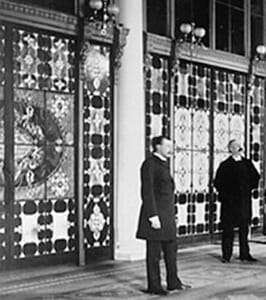
Figure 2: Louis in front of work at White House in 1882.
The high point of Tiffany’s career may have come in the early 1880s. He was commissioned by Mark Twain in 1881 to provide the interior design of his home in Hartford, Connecticut. His most notable work came in 1882 when President Chester Arthur insisted that Tiffany redesign the interior of the White House. President Arthur refused to move into the White House until Tiffany’s interior design work was complete.
Following the disbanding of the partnership, Louis incorporated the Tiffany Glass Company on December 1, 1885. He renamed the company to Tiffany Studios in 1902. A year prior to starting his own firm, Louis’ wife got sick with Tuberculosis. He brought her to Saint Augustine to provide her a more hospitable climate for her recovery. However, a year after being diagnosed, she died in 1885. It was during his travels to Florida that Tiffany met Henry Flagler.
The two men developed a friendship that resulted in Tiffany doing some work for Flagler. He provided a stained-glass window for Flagler’s Memorial Presbyterian Church in Saint Augustine. Given the friendship, many early Miami residents wondered if Tiffany also provided glass for Flagler’s First Presbyterian Church in Miami. Flagler donated land in downtown Miami and provided the funding to build the original church.
The Flagler Chapel at First Presbyterian’s current location was relocated from downtown Miami to Brickell in the late 1940s. In addition to furniture and other important furnishings, the stained-glass windows were relocated from the original church and included in the Brickell location as part of the Flagler Chapel. It has never been confirmed that the glass was provided by Tiffany.
While it is speculation that the stained-glass in the First Presbyterian Flagler Chapel was designed by Tiffany, it is known that Eugene Staley installed Tiffany glass in the annex to his mansion at 1408 South Bay Shore Drive. Staley remodeled the main house and the annex after he purchased the property in 1932. It is unclear what happened to the glass when the mansion was razed in the 1950s, but it was likely discarded during demolition.
Tiffany Discovers Miami
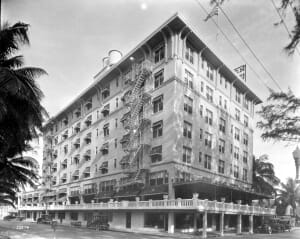
Figure 3: Hotel Urmey in 1925
By the time Tiffany began traveling to Miami, he had been married twice and had eight children between his two marriages. Louis got married to his first wife, Mary Woodbridge Goddard, in 1875. The couple had four children prior to Mary’s untimely death from Tuberculosis in 1885.
Louis got remarried in 1886 to Louise Wakeman Knox. He had four more children with Louise. The number of children he fathered may have had something to do with his fondness for octagon as a shape. Louise died in 1904 leaving Tiffany a widower for the second time.
Although he was in his sixties as the second decade of the twentieth century approached, Tiffany was single and decided to sow his wild oats. He began to throw lavish parties and surrounded himself with younger women. At one dinner party at his Oyster Bay home in New York, he had young women dressed in ancient Greek costume serve Peacock to his guests. Despite his grey beard and grizzled appearance, young women were as interested in him as he was in them.
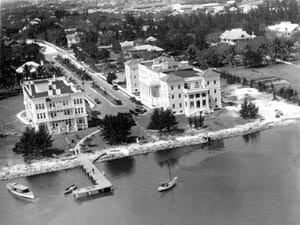
Figure 4: Brickell & Bulmer Apartments in 1930s
However, it didn’t take long for his lifestyle to catch up to him. By 1909, he began to feel sick and it scared him. He immediately hired three nurses to attend to him until he recovered. After he felt better, he offered all three nurses full-time jobs to watch over him. However, only one accepted the job. Sarah Hanley became his full-time nurse and travel companion.
It was at this time that Tiffany began traveling to South Florida. Tiffany traveled with his nurse in his private rail car to Miami and generally lodged at the newest accommodations in town. He stayed in the Urmey Hotel in 1918 and was the first guest at the Bulmer Apartments after they were completed in 1919. He hadn’t really considered buying property during his first ten years traveling to Miami.
However, when his sister, Annie Mitchell, bought land from Mary Brickell in 1920, Louis decided to also set roots in Miami. He bought a lot a couple of plots north of his sister’s property on Millionaire Row. The address of Tiffany’s winter home was 1865 Brickell Avenue.
The Comfort Lodge
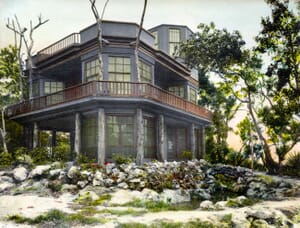
Figure 5: Comfort Lodge looking east in 1930s.
When it was time to design his Miami home, Tiffany hired a familiar architect. J.E. Terwilliger had been Tiffany’s architect for the prior sixteen years and understood his eccentricities. The plan called for the home to be shaped as an octagon. It provided for eight bedrooms and five bathrooms. Every room in the house was designed to also be octagon in shape. The idea was to be able to slide walls and windows to leave the house as open as possible when desired.
The task of building this unusual home was given to Del E. Merrill. Not only did Merrill need to work with a challenging design, but he was also tasked with preserving as much of the environ as possible. Tiffany had given instructions to retain the natural foliage and to blend the home into its surroundings. He wanted his property to look rustic and natural. A winding driveway was cut through the wooded hammock and was enveloped by a wall of green leaves.
Tiffany relocated several large cypress trees from Palatka, Florida, to provide support for the second story. The illusion was to make it look like the trees grew on the property and were sawed off for the purposes of building the house and supporting the second level. The east side of the second story was mostly windows so that Tiffany could work while enjoying the vistas of the bay through the foliage.
A third story was added to provide an observation tower above the tree line. It was described as appearing like a New England widow walk. The tower was accessed by a covered staircase. Tiffany wanted a clear view of the bay over the top of the canopy of trees on his property.
Mitchell Bingham, one of Louis’ nephews, commented that the tables in the home were also octagonal. The furniture had to be special ordered to fit into the oddly shaped rooms. One can only imagine of how difficult it would have been to furnish each room.
Construction of the home was completed in November of 1920. The dimension of the home was forty-five feet in each direction. It cost between $30,000 – $40,000 to build. Once it was completed, Dr. Robert Spicer referred to the structure as “one of the oddest-looking places” he had ever seen. Spicer lived next door at 1901 Brickell Avenue.
Tiffany named his home “Comfort Lodge”. The name was partly due to his desire for his guests to feel comfortable when visiting him in Miami. It also was to honor a departed family member. Louis Comfort Tiffany was given his middle name after his paternal grandfather’s first name. Louis was very close to his grandfather.
Retirement in Miami
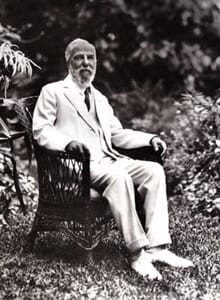
Figure 6: Louis at Comfort Lodge in 1920s.
By the time his Miami home was complete, Tiffany’s business had slowed considerably. His glass was considered part of the Art Nouveau movement which had fallen out of fashion by the late 1910s. It was at this time that Louis also began to slow down and began to ease into retirement.
In 1919, he setup the Louis Comfort Tiffany Art Foundation to benefit young talented artists. He donated his Oyster Bay home, along with eighty acres of land, to the foundation. He also deeded his entire collection of paintings, glass and other art work to the foundation. Lastly, he pledged $1,000,000 to maintain the foundation.
After moving into the Comfort Lodge, Tiffany enjoyed his time in Miami during the winter months. He was good friends with Thomas Edison who would visit him in Miami. Edison had a winter home in Fort Myers and the two men were occasionally seen walking down Brickell Avenue together when Edison would make the trip from the west coast of Florida.
Tiffany was also commonly seen sketching and painting at Baker’s Haulover in the mid to late 1920s. It was one of his favorite areas in South Florida to find inspiration when he felt the need to reacquaint himself with his art.
However, Tiffany was not always recognized in his travels around South Florida. In March of 1926, Tiffany drove over to Miami Beach with three companions to check out the changes to the beach since his last visit. While standing on the beach and checking out the crowds, his friends were surprised that no one paid any attention or even recognized Tiffany. His celebrity had begun to fade as well.
During his time in Miami, Tiffany was a wealthy man. Despite donating property, art and money to his foundation, he still enjoyed a very comfortable lifestyle. However, as it had done so many other men, the stock market crash of 1929 hit Louis hard financially.
By 1932, Tiffany’s company filed for bankruptcy. Louis took the business setback very hard and it affected his health. On January 17, 1933, Louis Comfort Tiffany died at the age of eighty-four.
End of Comfort Lodge in 1935
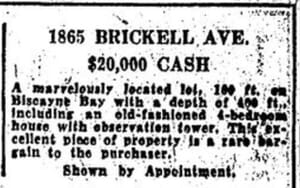
Figure 7: Ad in Miami Herald on March 17, 1935.
When Tiffany’s estate was settled, his Miami property was turned over to his foundation. The trustees first considered converting his home into a museum to showcase his work. However, difficult financial times during the Great Depression forced them to list the property up for sale.
In June of 1935, David P. Scobie purchased the property for $20,000. One newspaper article indicated that Comfort Lodge was damaged in a hurricane prior to the sale and it may have not been standing when Scobie bought the land. After the purchase, Scobie built a new two-bedroom, two-bath residence on the property as an investment.
Scobie rented his new home to Maria E. Freyer, a restauranteur from Scarsdale, New York. Freyer was an internationally known figure in the restaurant industry. She operated The Garden Restaurant at 2235 Southwest Eighth Street from 1932 until her death in 1951. She was also one of the founders of the Greater Miami Restaurant Association.
The home built by Scobie stood until the early 1970s when it was razed to make room for the Brickell Place Condominiums. Brickell Place was a multi-tower condominium complex developed by Charles Cheezem of Cheezem Development Corporation. The project began in 1973 and was completed by the mid-1970s. The towers still stand today on the land once owned by Tiffany.
Comfort Lodge Location Misunderstood

Figure 8: Annie Mitchell Home at Atlantis Condo Pool.
Much like most of Brickell’s old millionaire row, Tiffany’s winter home in Miami has largely been forgotten. This is highlighted by the misunderstanding as to where it once stood. When property was being cleared for the Atlantis Condominium in the early 1980s, Arquitectonica was required to preserve part of the former mansion that stood on the site at 2025 Brickell Avenue.
The architects incorporated a wall of the mansion into their pool area for the condominium complex. Many believed that they were preserving the old Louis Comfort Tiffany home as part of the building’s design.
However, the mansion that stood at 2025 Brickell Avenue was the home of Annie Tiffany Mitchell. She was Louis’ sister and a big part of the reason he bought property on Brickell Avenue in 1920. While the reason for preserving the home may been based on a misunderstanding, it is significant that at least one of the structures from the Tiffany family was partially retained as a remembrance of when Brickell Avenue was the centerpiece of Miami’s Gold Coast.
Click Here to Subscribe
Resources
- Biography.com: “Louis Tiffany”.
- Wikipedia: “Louis Comfort Tiffany“.
- HM Magazine: “Brickell Avenue’s Millionaire Row and Louis Comfort Tiffany’s Comfort Lodge”, by Geraldine H. Williams.
- Miami News: “Remarkable Winter Home Built by Tiffany”, July 24, 1920.
- Miami News: “Miami Homes Built Under Direction of Noted Artist”, March 30, 1921.
- Miami News: “Throng Pays Noted Jeweler No Heed”, March 1, 1926.
- Miami Herald: “Developer of Glass is Dead in New York”, January 21, 1933.
- Miami News: “Foundation Gets Tiffany Property”, January 31, 1933.
- Miami Herald: “3 Sales Reported by Title Company”, June 30, 1935.
- Miami Herald: “Mrs. Freyer, Restaurant Owner, Dies”, September 6, 1951.
- Miami Herald: “Tiffany’s House Odd, but So Was He”, April 14, 1968 by Nixon Smiley.
Images
- Cover: Front of Comfort Lodge in 1930s. Courtesy of Florida Memory.
- Figure 1: Portrait of Louis Comfort Tiffany. Courtesy of History.com.
- Figure 2: Louis in front of work at White House in 1882. Courtesy of Wikipedia.
- Figure 3: Hotel Urmey in 1925. Courtesy of Florida Memory.
- Figure 4: Brickell & Bulmer Apartments in 1930s. Courtesy of Florida Memory.
- Figure 5: Comfort Lodge looking east in 1930s. Courtesy of Florida Memory.
- Figure 6: Louis at Comfort Lodge in 1920s. Courtesy of Florida Memory.
- Figure 7: Ad in Miami Herald on March 17, 1935.
- Figure 8: Annie Mitchell Home at Atlantis Condo Pool.

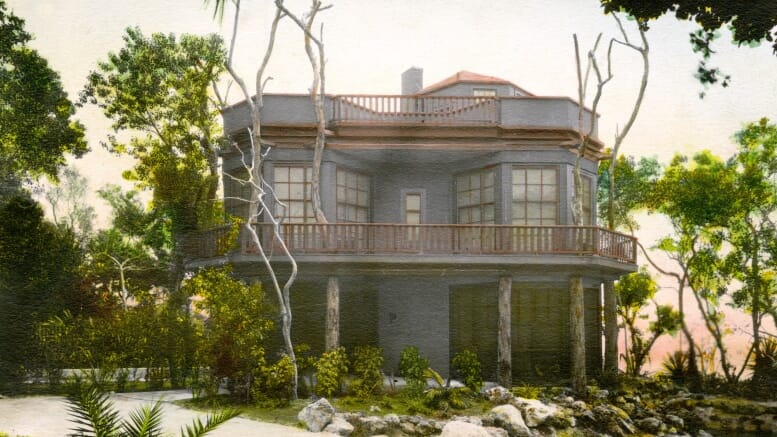
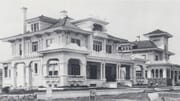
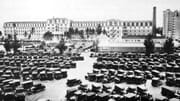
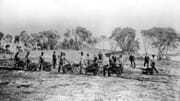
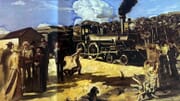
great piece casey! wish i could attend your millionaires row lecture.
So interesting!! I had no idea the Tiffany family lived in Miami. What a shame that Miami has no respect for historical things! They tear everything down, so sad.
Fascinating. Miami it seems has always been a magnetic. Echo the sentiments that too often our unique history gets bulldozed. I’m writing this from Holland, where this born and raised Miami native now lives, and I can tell you hanging on to those beautiful old buildings winds up paying in the end.
Thank you for feedback, Maria.
Any one with information on Comfort Lodge, please contact me. carlheck@me.com